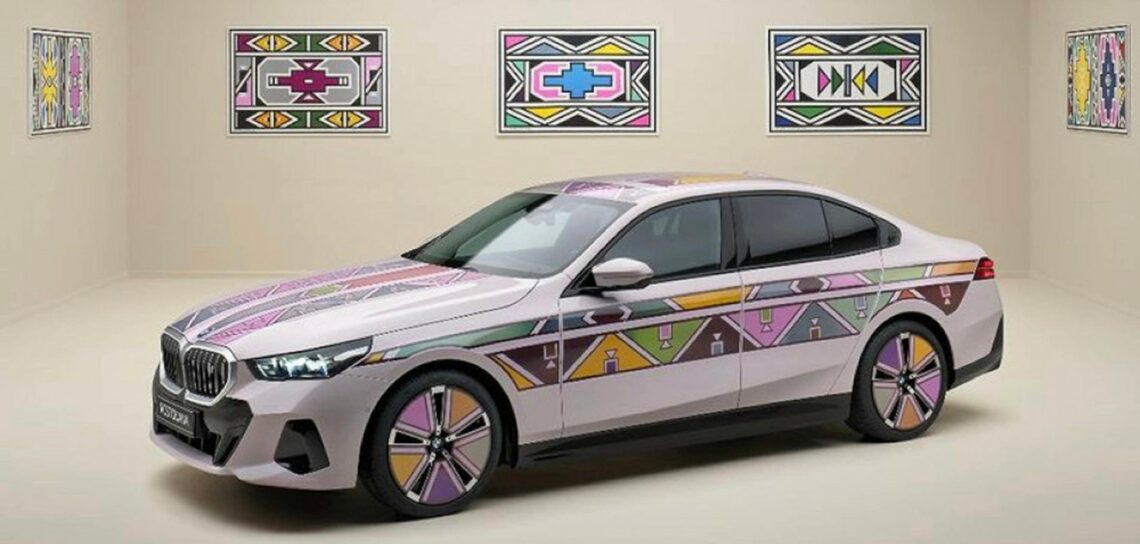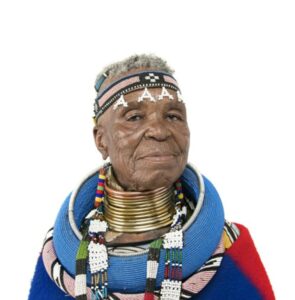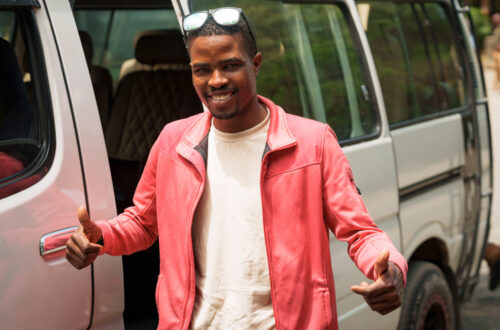
Esther Mahlangu Meets BMW, Ndebele Art, Electric Cars and the Future of South African Luxury
When an 88-year-old Ndebele artist collaborates with one of the world’s leading car manufacturers on a colour-changing electric vehicle, you know the rules of luxury are being rewritten. And when that artist is none other than Dr. Esther Mahlangu, South Africa’s most iconic living painter, the fusion isn’t just stylish, it’s seismic.
Earlier this year, BMW unveiled its new i5 Flow “Nostokana”, a futuristic electric car wrapped in programmable e‑ink panels that pulse with colour and pattern. But the real star of this show wasn’t the battery tech or German precision engineering. It was the unmistakable hand of Mahlangu: bold lines, geometric symmetry, and the vibrant palette of Ndebele heritage. The car is a moving canvas, and Mahlangu’s art makes it not only a feat of innovation, but a symbol of African sophistication.
This isn’t just a flashy one-off, it’s the latest chapter in a global reawakening: African aesthetics are no longer being admired from afar, they’re leading the design conversation. And in that cultural revolution, Esther Mahlangu is queen.
The Artist Who Painted Outside the Lines
Born in 1935 in the rural village of Middelburg, Esther Mahlangu began painting on the walls of her family home using chicken feathers and natural pigments. She learned the traditional patterns of her Ndebele forebears, diamonds, chevrons, striking linework, from her mother and grandmother. By her teens, she had already mastered the technique and began evolving it, scaling up her designs, experimenting with colour, and imagining new ways to bring Ndebele art to life.
Her first international breakthrough came in 1989 at the Centre Pompidou in Paris. In a world that rarely gave space to African women artists, Mahlangu’s talent was unmissable. Then, in 1991, BMW commissioned her to paint their 525i model, making her the first woman and first African to design a BMW Art Car, following in the footsteps of artists like Andy Warhol and Roy Lichtenstein. She took the opportunity, not just as an artist, but as an ambassador of her culture. What emerged was not just a car, it was a cultural artefact on wheels.
With the i5 Flow “Nostokana,” Mahlangu and BMW have created something breathtakingly original. The car features over 240 e‑ink panels that can be digitally programmed to switch colours and patterns. But instead of random graphics or bland modernism, it’s Mahlangu’s art, transposed digitally yet unmistakably her hand, that animates the vehicle. The project’s name, “Nostokana,” is a nod to a personal childhood memory, reaffirming Mahlangu’s belief that design and storytelling are inseparable. Each colour shift and line transition tells a story, not just of technological progression, but of cultural memory and imagination.
It’s not the first time she’s redefined a luxury object. She has painted a Rolls‑Royce Phantom. She’s collaborated with sneaker brands, fine wine labels, and haute couture designers. Every time, she elevates the object, not just because of her skill, but because of what she represents, a living link between tradition and the future.
South African Style Goes Global
 What makes Esther Mahlangu’s art so timeless is that it never tries to imitate Western trends. Her work is unmistakably South African, fiercely local, yet instantly universal. This aesthetic confidence is what’s fuelling the broader appeal of African design in global luxury circles, from fashion and architecture to interior design and automotive aesthetics.
What makes Esther Mahlangu’s art so timeless is that it never tries to imitate Western trends. Her work is unmistakably South African, fiercely local, yet instantly universal. This aesthetic confidence is what’s fuelling the broader appeal of African design in global luxury circles, from fashion and architecture to interior design and automotive aesthetics.
At a time when “authenticity” is currency in the global market, Mahlangu’s designs are priceless. She doesn’t reinvent culture for the international gaze, she invites the world to see it as it is, brilliant, bold, and undeniably modern. Mahlangu’s work has been showcased in top museums across the globe, New York’s Museum of Modern Art, London’s British Museum, and countless others. She’s collaborated with brands such as Belvedere Vodka and Swedish furniture giants, each time bringing an African signature to spaces that were historically Eurocentric.
Her 2021 sneaker collaboration with a top American brand sold out in minutes. Limited-edition drops featuring her signature designs have become collectors’ items. She has even customised fine art pieces for fashion houses like Comme des Garçons and South African jewellery brands, helping elevate the continent’s presence in global fashion forums.
Her versatility is not only a testament to her creativity but a signal to luxury brands, South African culture is not niche, it’s next.
Mahlangu’s collaborations speak volumes about what’s possible when African designers and artists are positioned not as novelties, but as co-creators of global style. Her career provides a playbook for South African creatives navigating an increasingly borderless fashion and design economy.
There’s also a generational aspect at play, younger designers, like Thebe Magugu and Rich Mnisi, have cited Mahlangu’s influence, not just aesthetically, but in terms of positioning and brand power. In a landscape that once saw cultural heritage as a limitation, her success proves it is an asset. For South African luxury brands there’s a real opportunity to build on this momentum. Imagine a capsule clothing collection inspired by Mahlangu’s lines, or a homeware series blending Ndebele motifs with Scandinavian silhouettes. The possibilities are endless when local identity meets premium execution.
The BMW i5 project has one last symbolic flourish. Unlike a canvas or sculpture that lives in a gallery, this artwork moves. It drives through cities, through time, through histories. It changes colours and patterns not just for spectacle, but to express a living, breathing culture. In a way, that’s what South African luxury is doing today, no longer static or stereotyped, but dynamic and ready to be seen, re-seen, and celebrated.
Esther Mahlangu may have started by painting on the mud walls of a rural home, but today, her lines stretch across leather interiors, car bonnets, fashion runways, and champagne bottles. Her legacy is not just in what she’s created, but in how she’s shifted perceptions, about what art is, where it can live, and who gets to define the future of elegance.
A Living Legacy in Full Colour
Esther Mahlangu’s story is about far more than brushes and cars. It is a story of perseverance, cultural pride, and unapologetic creative agency. In a world still waking up to the beauty of African narratives, she has remained years ahead. Her latest collaboration with BMW is not just a triumph of art and tech, it’s a lesson in how cultural legacy, when honoured and elevated, becomes the blueprint for innovation. It’s a nod to the past, a statement in the present, and a promise for the future.
And for those watching from fashion houses, boardrooms, or South African studios, her message is clear, luxury is not defined by geography, but by imagination.




